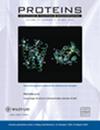利用蛋白质语言模型对离子通道和离子转运体进行精确分类
IF 3.2
4区 生物学
Q2 BIOCHEMISTRY & MOLECULAR BIOLOGY
引用次数: 0
摘要
本研究介绍的 TooT-PLM-ionCT 是一个综合框架,它整合了三个不同的系统,每个系统都是为以下任务之一精心定制的:区分离子通道(IC)与膜蛋白(MP)、分离离子转运体(IT)与 MP,以及区分 IC 与 IT。利用六个蛋白质语言模型(PLM)--ProtBERT、ProtBERT-BFD、ESM-1b、ESM-2(650M 参数)和 ESM-2(15B 参数)--的优势,TooT-PLM-ionCT 采用了传统分类器与深度学习模型相结合的方法来进行细致的蛋白质分类。我们的系统最初是在先前研究人员的现有数据集上进行验证的,在从 MP 中识别 IT 和从 IT 中区分 IC 方面表现出了卓越的性能,其中 IC-MP 的判别达到了最先进的水平。根据额外验证的建议,我们引入了一个新的数据集,大大提高了我们的模型在生物信息学挑战中的稳健性和通用性。这项新的评估强调了 TooT-PLM-ionCT 在保持高分类准确性的同时适应新数据的有效性。此外,这项研究还探讨了影响分类准确性的关键因素,如数据集平衡、使用冻结 PLM 表示法对微调 PLM 表示法的影响,以及浮点计算中半精度和全精度之间的差异。为了便于更广泛的应用和访问,我们开发了一个网络服务器(https://tootsuite.encs.concordia.ca/service/TooT-PLM-ionCT),用户可以通过我们的专业系统对未知蛋白质序列进行评估,以完成 IC-MP、IT-MP 和 IC-IT 分类任务。本文章由计算机程序翻译,如有差异,请以英文原文为准。
Exploiting protein language models for the precise classification of ion channels and ion transporters
This study introduces TooT‐PLM‐ionCT, a comprehensive framework that consolidates three distinct systems, each meticulously tailored for one of the following tasks: distinguishing ion channels (ICs) from membrane proteins (MPs), segregating ion transporters (ITs) from MPs, and differentiating ICs from ITs. Drawing upon the strengths of six Protein Language Models (PLMs)—ProtBERT, ProtBERT‐BFD, ESM‐1b, ESM‐2 (650M parameters), and ESM‐2 (15B parameters), TooT‐PLM‐ionCT employs a combination of traditional classifiers and deep learning models for nuanced protein classification. Originally validated on an existing dataset by previous researchers, our systems demonstrated superior performance in identifying ITs from MPs and distinguishing ICs from ITs, with the IC‐MP discrimination achieving state‐of‐the‐art results. In light of recommendations for additional validation, we introduced a new dataset, significantly enhancing the robustness and generalization of our models across bioinformatics challenges. This new evaluation underscored the effectiveness of TooT‐PLM‐ionCT in adapting to novel data while maintaining high classification accuracy. Furthermore, this study explores critical factors affecting classification accuracy, such as dataset balancing, the impact of using frozen versus fine‐tuned PLM representations, and the variance between half and full precision in floating‐point computations. To facilitate broader application and accessibility, a web server (https://tootsuite.encs.concordia.ca/service/TooT-PLM-ionCT ) has been developed, allowing users to evaluate unknown protein sequences through our specialized systems for IC‐MP, IT‐MP, and IC‐IT classification tasks.
求助全文
通过发布文献求助,成功后即可免费获取论文全文。
去求助
来源期刊

Proteins-Structure Function and Bioinformatics
生物-生化与分子生物学
CiteScore
5.90
自引率
3.40%
发文量
172
审稿时长
3 months
期刊介绍:
PROTEINS : Structure, Function, and Bioinformatics publishes original reports of significant experimental and analytic research in all areas of protein research: structure, function, computation, genetics, and design. The journal encourages reports that present new experimental or computational approaches for interpreting and understanding data from biophysical chemistry, structural studies of proteins and macromolecular assemblies, alterations of protein structure and function engineered through techniques of molecular biology and genetics, functional analyses under physiologic conditions, as well as the interactions of proteins with receptors, nucleic acids, or other specific ligands or substrates. Research in protein and peptide biochemistry directed toward synthesizing or characterizing molecules that simulate aspects of the activity of proteins, or that act as inhibitors of protein function, is also within the scope of PROTEINS. In addition to full-length reports, short communications (usually not more than 4 printed pages) and prediction reports are welcome. Reviews are typically by invitation; authors are encouraged to submit proposed topics for consideration.
 求助内容:
求助内容: 应助结果提醒方式:
应助结果提醒方式:


